Temple & Beaches of South India
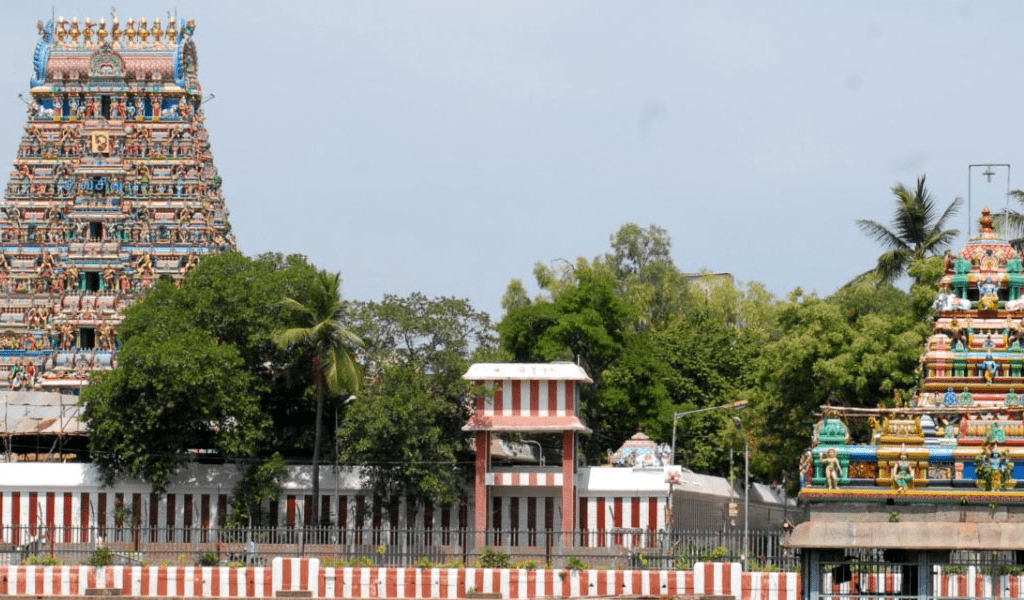
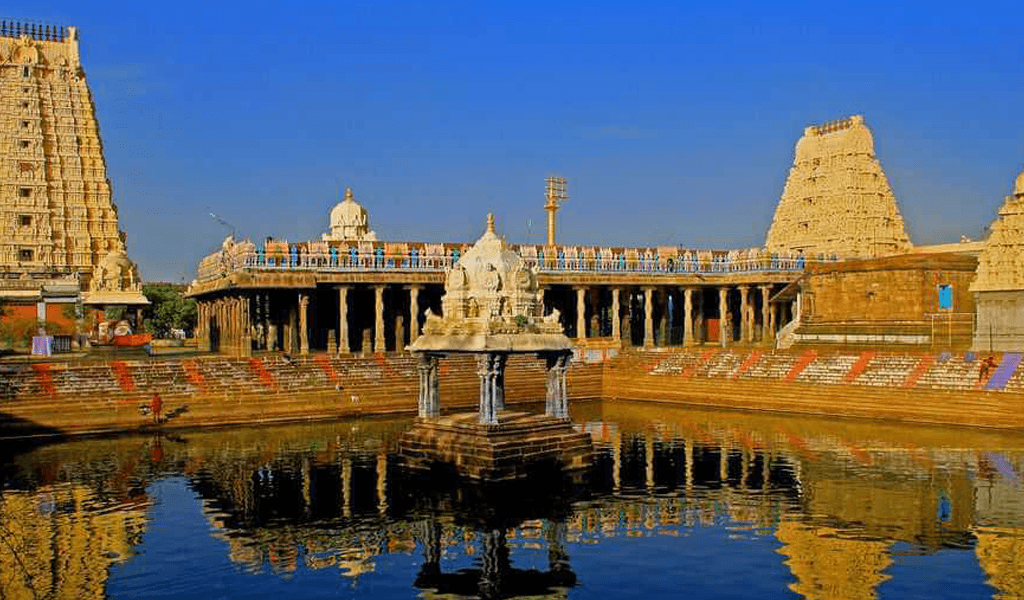
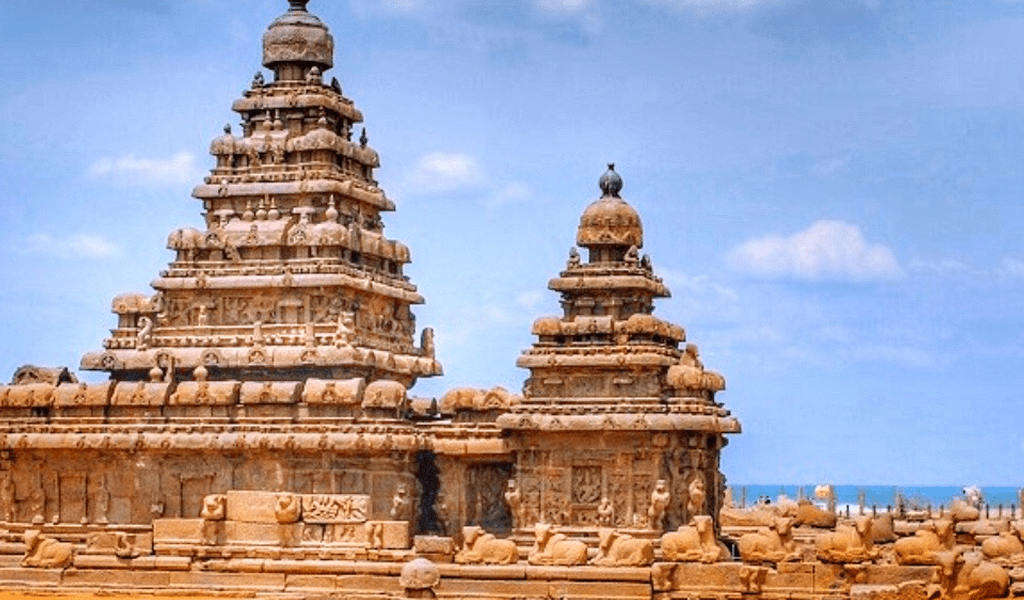
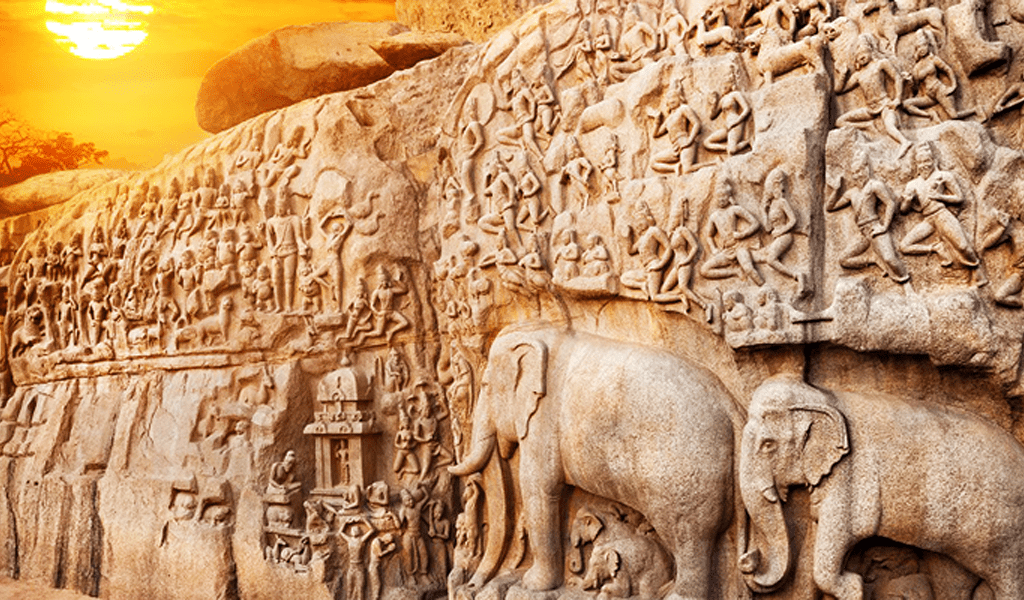
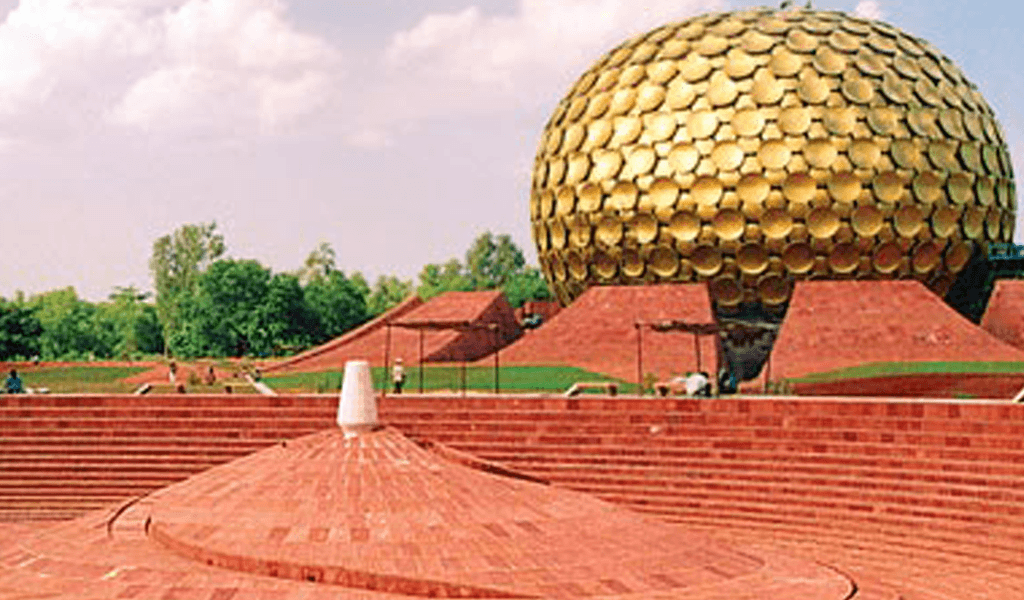
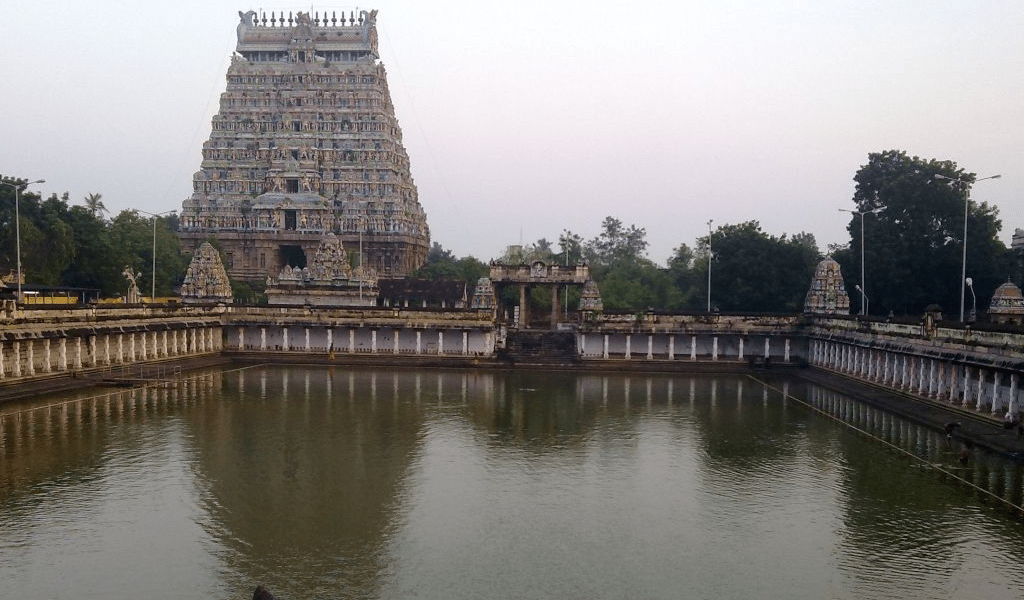
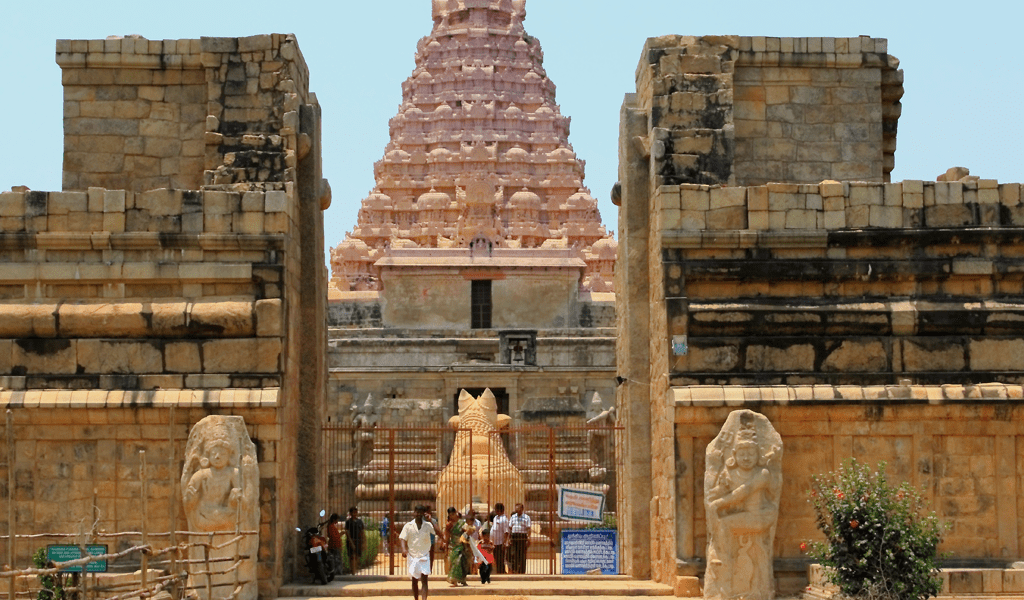
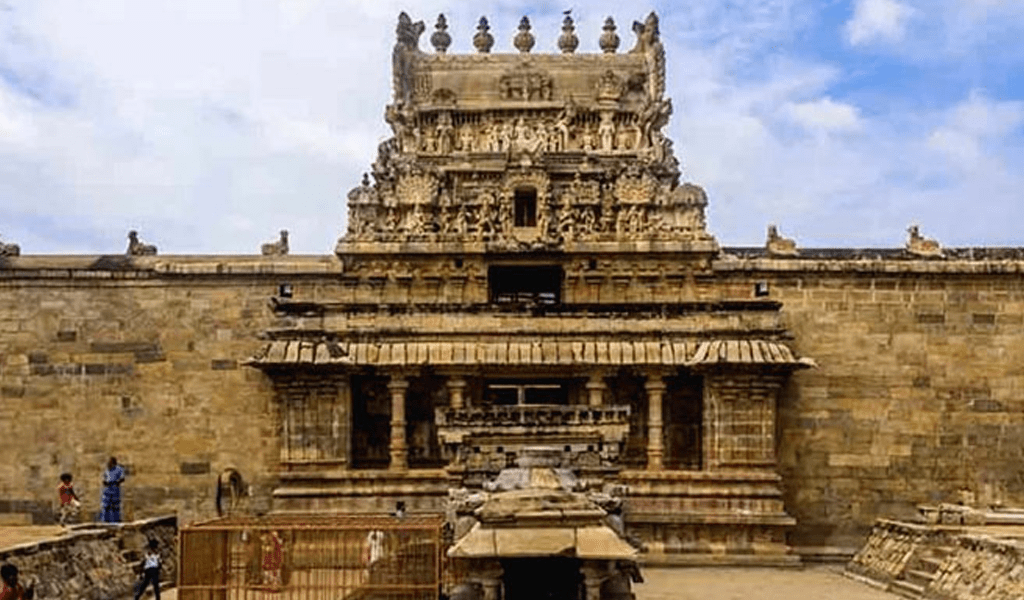
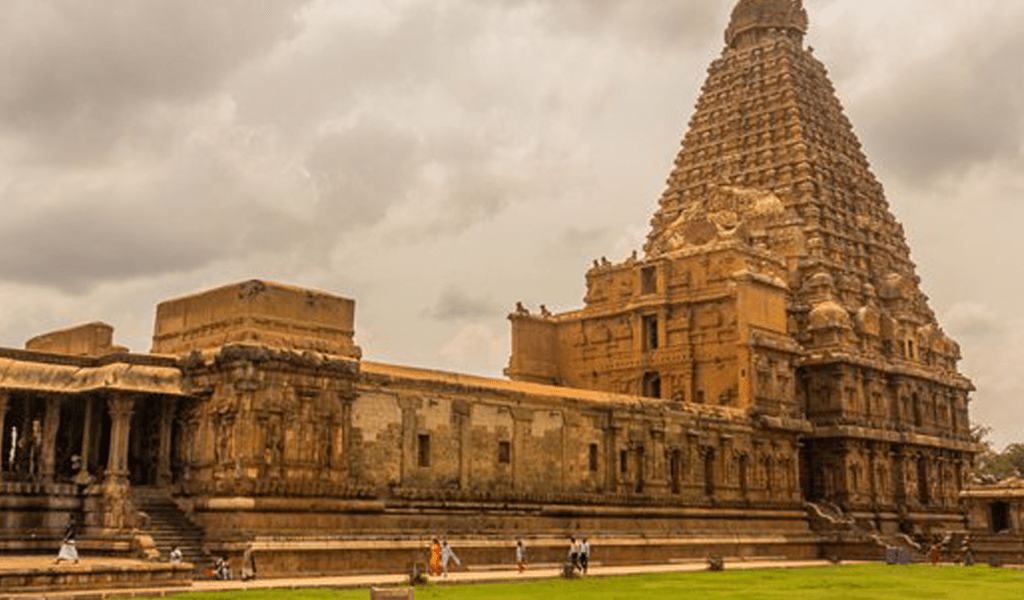
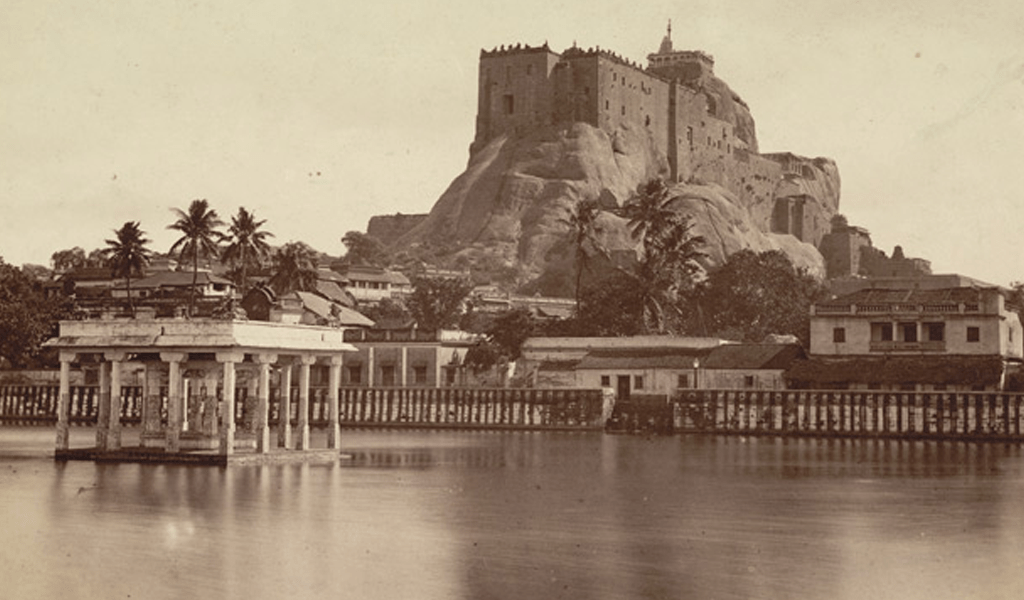
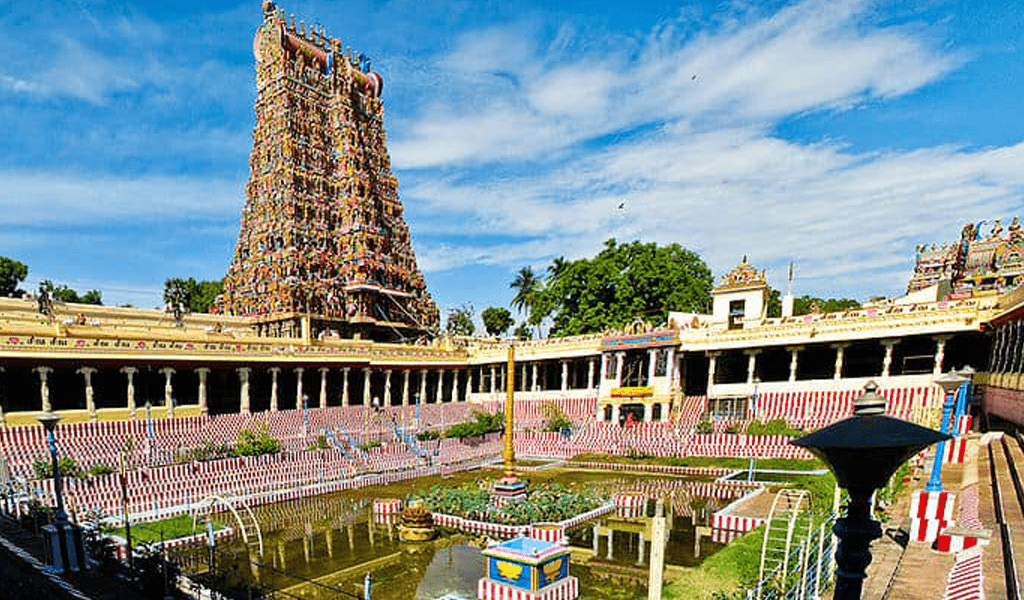
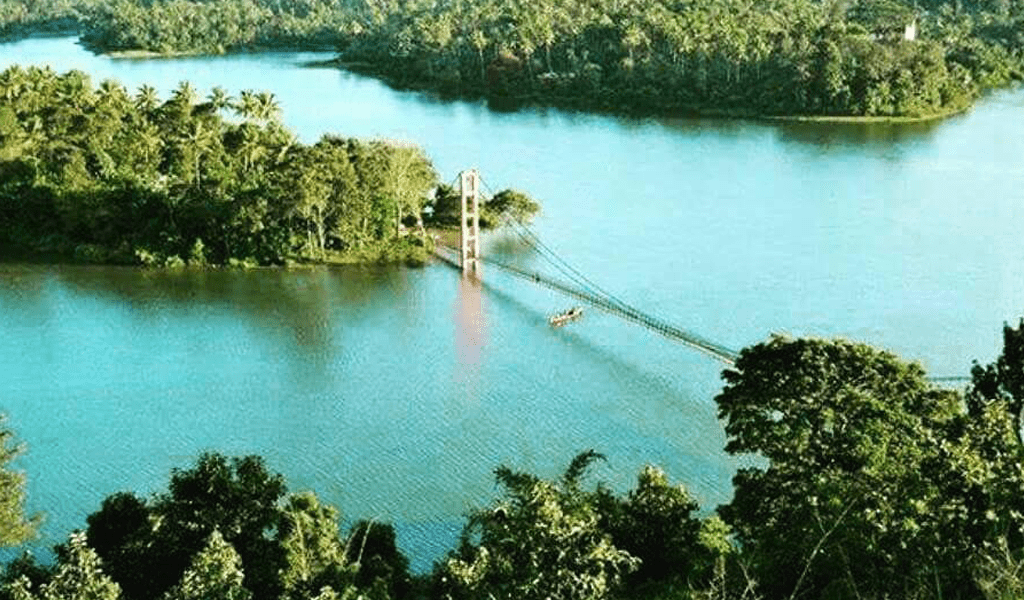
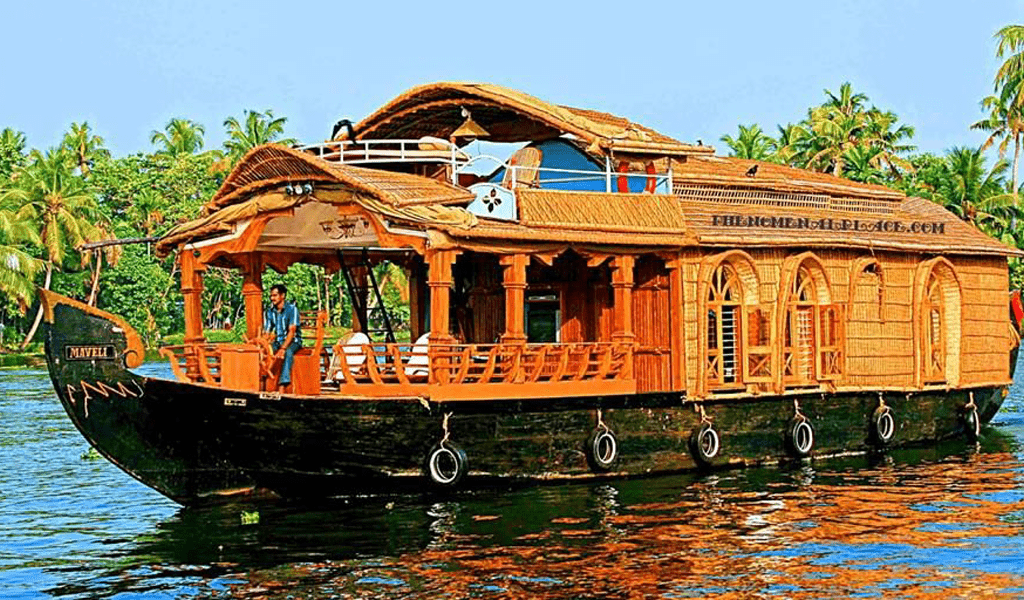
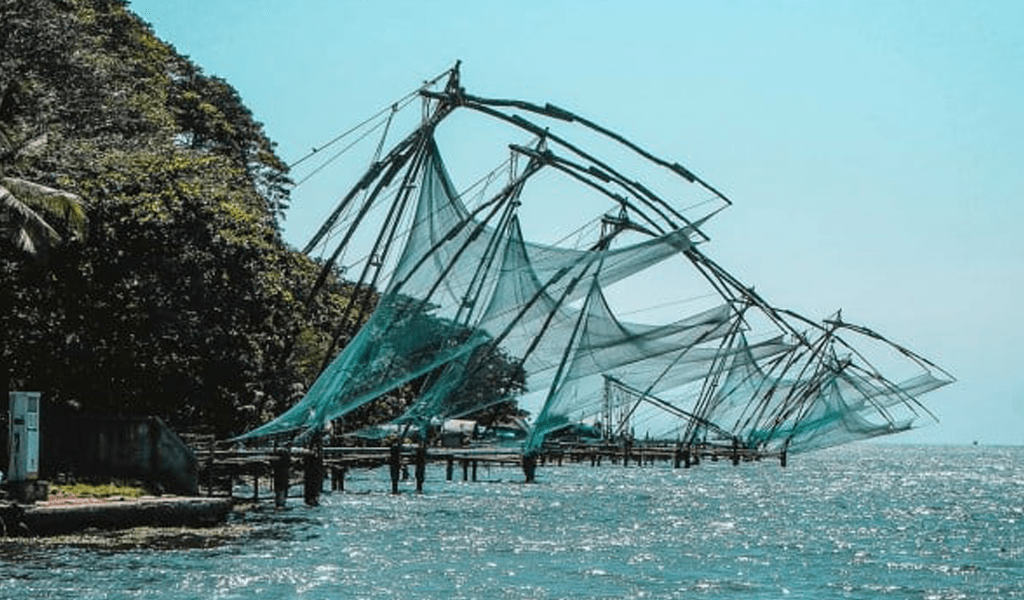
15 Nights & 16 Days
Highlights
- Meet & Assist
- Guided Sightseeing Tours
- Stay in City, Rural & Beach Luxury Hotels
- Fort St. George, St. Thomas Church, World’s Second-Longest Marina Beach, Kapaleeswarar Temple – Chennai
- Ekambareswarar Temple, Kailasanathar Temple – Kanchipuram
- The Shore Temple – Mahabalipuram
- Tuk Tuk ride in Puducherry & Kochi.
- Sri Aurobindo Ashram, French Colony – Puducherry
- Nataraja temple – Chidambaram
- Shiva Temple – Gangaikondacholapuram
- Thanjavur Art Gallery & Brihadeeswara Temple – Thanjavur
- Rockfort Temple – Tiruchirappalli
- Meenakshi Temple – Madurai
- Nature Walk, Jungle Jeep Safari, Elephants & Wildlife, Trekking in Forest, Boating in Gavi Lake – Periyar National Park (Thekkady)
- Backwaters Cruise with Overnight Stay in Houseboat – Alleppy
- Marari Beach – Marari
- Village & Shiva Temple Visit – Vaikom
- Kathakali Show, Chinese Fishing Nets, St. Francis CSI Church, Tuk Tuk Ride, Spice Market, Jewish Synagogue, – Kochi
Chennai, Kanchipuram, Mahabalipuram, Pondicherry, Chidambaram, Gangaikondacholapuram, Kumbakonam, Thanjavur, Trichy, Madurai, Periyar National Park, Thekkady, Alleppey, Marari Beach, Vaikom, Kochi
You will be met & assisted on arrival at Chennai Airport and transferred to your pre-booked hotel.
Ancient temples, vibrant arts, natural wonders and a bustling culinary scene make Chennai, an amazing city, one of the most popular tourist destinations in the southern fringes of India. Located on the Coromandel Coast, this busy metropolis was formerly called Madras. From the resplendent classical dance form of Bharatnatyam to the rich flavours of its iconic cuisine and from the lustrous silk sarees traded here to the gorgeous temples and churches, Chennai is the gatekeeper of South Indian art, culture and traditions.
Alongside heritage, flourish natural and contemporary highlights: sprawling beaches with natural and man-made wonders, a bustling seaport, quirky cafés, a multi-transport system, theme parks, industrial hubs, hi-tech parks and universities. Its population is a heterogenous mix of locals, expats and people from the rest of India. Chennai is widely known as the “Detroit of India”, a moniker it earned because of the high concentration of automobile factories located in and around here.
There are several stories about the origin of the city’s name. Initially, during the Nayakars rule, its name was Madras, which was inspired by Madraspattinam. At that time, it was a fishing village that was situated to the north of the area that is now Fort St George. The king of Vijaynagar sold the piece of land to the British on which now stands Fort St George, which houses the Secretariat Complex of the Government of Tamil Nadu. It was the British officers who retained the name Madraspattinam. For the local populace, it was more common to call the city Chennapattinam. According to another legend, the city was named Chennai in honour of Damal Chennappa Nayakkar, a Nayak ruler. In the year 1996, the government renamed it to Chennai officially and the name stands even today.
After check-in, at leisure to relax.
Overnight stay at the hotel.
Post breakfast, proceed for morning sightseeing tour of Chennai.
Visit Fort St. George, one of the Oldest British Constructions and East India Company’s principal settlements in 1640. Neoclassical style impressive buildings which host at present the seat of the Government of Tamil Nadu.
St. Thomas Church, is declared as the National Shrine of Santhome Basilica, built over the tomb of the great Apostle St. Thomas, who came to India in 52 A.D. to spread the Christianity.
Marina Beach, situated along a 12 km shoreline in the city of Chennai, India, along the Bay of Bengal. It is the World’s Second-longest Beach. The beach begins near Fort St. George in the north to Besant Nagar in the south, a distance of about 12km. Kapaleeswarar Temple dedicated to Lord Shiva, with its massive and intricately carved Gopuram towering into the sky, is situated in the southern suburb of Mylapore. Kapalam means “bowl of skull”. Lord Shiva or Eswara is standing with ascetic’s bowl of skull in his hand. As per the legend, at the time of dissolution of cosmos nothing remains except Lord Eswara with bowl of skull. A 16th century temple which highlights the Dravidian architecture was built by the Vijayanagara dynasty with colourful towers in the eastern and western sides along with the sacred tank facing the western tower.
Afternoon at leisure to relax.
Overnight stay at the hotel.
Post breakfast, checkout and drive to the Temple City Tour in the Silk city named “Kanchipuram”, an ancient capital of the Pallava dynasty ruled between 7th and 8th Centuries.
Synonymous with spirituality, serenity and silk, the temple town of Kanchipuram, is dotted with ancient temples that are architectural marvels and a visual treat for the eyes. Situated on the banks of River Vegavathi, this historical city once had 1,000 temples, of which only 126 (108 Shaiva and 18 Vaishnava) now remain. Its rich legacy has been the endowment of the Pallava dynasty, which made the region its capital between the 6th and 7th centuries, and lavished upon it architectural gems that are a fine example of Dravidian styles. While the temple trail makes for an entrancing experience, the renowned Kanjeevaram sarees crafted in the city are truly awe-inspiring. Premium sarees made with superior-quality silk, these are known for their lustre, weight and gold zari work that make the wearer look graceful.
Visit the Ekambareswarar Temple, dedicated to Lord Shiva is the most famous one with tall towers, massive halls with sculptured pillars. Next, proceed to Kailasanathar Temple which is also meant for Lord Shiva is the finest specimen of Pallava architecture with beautifully carved sculptures built in 8th Century.
Afterwards, drive to Mahabalipuram, an ancient port city of the Pallavas.
Mamallapuram or Mahabalipuram, is a beautiful beach destination that is slowly becoming the surfing hub of the country. Speckled with several UNESCO World Heritage Sites, courtesy of the ancient Pallava dynasty (3rd – 9th century BC), who were great patrons of art and crafts, Mamallapuram holds a baffling visual treat around every corner. Its awe-inspiring cave temples, sculptures and monuments leave one marvelling at the skill of the craftsmen of that time. With its striking bas-reliefs and rock-cut temples, Mamallapuram is practically an open-air museum. Many of the temples, built with granite, relate the stories from the Hindu epic Mahabharata. Once a thriving port, Mamallapuram is now a UNESCO World Heritage Site complex, also famous for its seashell jewellery, seafood, cafés and markets and a breathtaking ocean-front. While you can soak in history visiting various historical sites, Mamallapuram’s pristine beaches, fringed by lush groves with a warm sun, invite surfers. With perfect sea waves between June and September, the beaches host surfing training sessions conducted by experts.
On arrival, check-into the hotel.
Overnight stay at the hotel.
Post breakfast, proceed to visit the famous The Shore Temple, a World Heritage UNESCO monument.
The temple is dedicated to Lord Shiva and Vishnu, situated nearby the sea shore. This is one of the oldest temples in South India, enclosed by a row of bulls carved out of rock. This majestic temple was built by King Rajasimha in the latter half of the Seventh century. There are seven structural temples but because of the ravages of the sea, six of them were destroyed and the only one which is still exists is this sea shore temple. There are two rock-cut shrines – one dedicated to Lord Shiva and the other to Lord Vishnu. It is a good example of the first phase of structural temples constructed in the Dravidian Style.
Afterwards visit Five Rathas “Five Chariots”, a monolithic structure, representing a unique style built by the Pallavas. The 7th Century monolithic rock-cut shrines called Pancha (five) Pandava Rathas – “Processional temple chariots” are named after the five Pandava brothers, heroes of the epic Mahabharatha and their queen “Draupadi”. Out of these, the Dharmaraja Ratha is the biggest and the best out of the Five Rathas. The carving of these Pancha Rathas undoubtedly demanded a great deal of hard work and creativity. The Sculptors dig out the scarp of the hill from front to back to create such magnificent architectural marvels. These unfinished Rathas are unique in their structure with rectangular base, apical shape, Octagonal roof and later came to influence the South Indian temple design.
Finally proceed to Arjuna’s Penance, This brilliant bas-relief is also known as the Bhagiratha Penance or “Descent of the holy river Ganges”. This glorious panel depicts the river Ganges descent from the sky. A sage doing penance standing on one foot, Shiva carrying trident, a small temple of Vishnu, a family of elephants, deer, lions, boar, rats, serpents, birds, semi celestial bodies are some of the eye-catching sculptures in the great panel.
Later in the afternoon, return to hotel.
Overnight stay at the hotel.
Post breakfast, checkout and drive to Pondicherry (Puducherry).
The French Colony, Puducherry (the official name was changed from Pondicherry in 2006) not only fascinates you, it makes you fall in love – with its French structures, seafront promenades, spiritual havens, tree-lined boulevards, unexplored and pristine beaches, and enchanting backwaters. It is also known for textiles, silk and traditional doll-making as well as high quality pottery, handmade paper, leather and aromatics. And of course, the never-to-be-forgotten French connection.
French is still popularly spoken and understood by residents from all walks of life. The Sri Aurobindo International Centre of Education, Lycée Français, Alliance Française and various other schools teach French. Puducherry is also known as “la Côte d’Azur de l’Est”, translating to the French Riviera of the East.
Its history is long and colourful. Some heritage structures in Puducherry date back to the 18th century, from the times when it was a French colony. The French connect is evident while taking a stroll in the old quarter, chiefly from the buildings that display a strong French architectural influence.
On arrival, check-into the hotel.
Later in the afternoon, proceed for Pondicherry City tour by visiting Sri Aurobindo Ashram, an Ashram dedicated to Sri Aurobindo & “The Mother”. Founded in 1926, this ashram is situated in the Eastern part of the busy city. The Ashram serves for the community located in the vibrant centre of modern urban setting. Sri Aurobindo and the Mother (also known as Mirra Alfasa, Parisien) worked jointly for the welfare of the community.
In 1952, the Mother established Sri Aurobindo International Centre of Education, and in 1968 an international township-Auroville. Every year, her birth and Memorial are celebrated as a grand festival in the Ashram. People in Pondicherry treat the Mother as their holy divinity, and they have a photograph of her exclusively the photo of her powerful eyes for the meditation. There is a library where you can find the meditation books and the photographs of the Ashram.
Have a rickshaw ride in the commercial streets.
Post sightseeing, return to the hotel.
Overnight stay at the hotel
Post breakfast, checkout and depart for Kumbakonam.
En route visit the famous Nataraja temple at holy town of Chidambaram, dedicated to Lord Shiva. This is revered as one of the five shrines scattered across the state that represent five elements (air, water, earth, fire and wind). Here, Lord Shiva is worshipped as Nataraja, the god of dance, while in most places he is revered as a Shivling. According to legend, Lord Shiva came to live in this town, but since it already served as the abode of Goddess Kali, the duo decided to resolve the issue through a dance competition. Lord Shiva gave a splendid performance of his cosmic dance, Tandav, while Kali enacted the lasya. Lord Shiva won the competition and became the Lord of Chidambaram. Lord Vishnu is also worshipped in this temple as God Govindaraja Perumal.
Then continue to visit the famous Shiva Temple at Gangaikondacholapuram which was built in the 11th century by the Chola dynasty, one of the World Protected UNESCO Site. With lush green landscapes surrounding it, the temple established by Rajendra Chola holds richly carved sculptures of Mahisasuramardini, Nataraja, Ardhanariswara and Chandikeshwara. There is also a massive monolith of Nandi and two majestic Dwarpalas guarding the entrance. The temple complex is a part of the UNESCO World Heritage Site grouping of Chola Temples. The site is a fine example of Chola architecture and encapsulated a very integral period of the dynasty’s rule. The temple has sculptures of exceptional quality; the bronze sculptures of Bhogasakti and Subrahmanya are Chola masterpieces of metal while the Saurapitha (Solar altar), the lotus altar with eight deities, is widely considered to be auspicious. Gangaikondacholapuram was the capital of Rajendra Chola (1012-1044 AD), the son of Raja Raja Chola. When Rajendra Chola settled down here, 70 km away from Thanjavur, he also built a temple for Lord Shiva on the ground, equivalent in magnificence to the Big Temple in Thanjavur. Legend states that once, during his travel, when he had conquered several northern kingdoms, the king brought back water from the holy River Ganga here in a golden pot as a sacrifice to Shiva. As a mark of celebration, he also established a liquid pillar of victory called Jalamaya Sthamba. Rajendra Chola was bestowed with the name Gangaikondan (the one who brought the Ganga).
Afterwards, resume journey to Kumbakonam.
On arrival, check-into the hotel.
Overnight stay at the hotel.
Post breakfast, checkout and drive to Trichy.
On the way, visit Tanjore (Thanjavur).
Thanjavur (popularly called Tanjore), stands as a glorious tribute to its former kings. At the heart of the town, is the UNESCO World Heritage Site of Brihadeeswarar Temple that was built in the 11th century and is adorned with unique carvings and sculptures, along with inscriptions that give an account of life 1,000 years ago. While the temples are awe-inspiring, the city’s opulent palaces are no less, testifying of the grandeur of the ancient Dravidian civilization.
A true embodiment of South Indian art and craft, Thanjavur boasts a fine selection of traditional handcrafted items like bobble head dolls, the divine Tanjore paintings and palm leaf articles. Thanjavur is also popular for classical music and Bharatnatyam dance. It is the birthplace of the percussion instrument thavil, popularly used in Indian classical music.
On arrival in Tanjore, visit Thanjavur Art Gallery which houses the collection of sculptures and statues, Saraswati Mahal Library Museum and Brihadeeswara Temple also known as Big Temple which is one of the World Heritage Monument built by the chola dynasty in the 10th century. Brihadeshwara is an example of Hindu architecture from South India from the Chola period. It was built by Raja (Tirupur) and emperor Raja Chola-1 and completed in 1010 AD. The temple turned 1000 years old in 2010. The temple is part of the UNESCO World Heritage Site known as the “Great Living Chola Temples”, along with Brihadeeswarar Temple, Gangaikonda Cholapuram and Airavatesvara Temple.
Afterwards, drive to Trichy.
A treasure trove of ancient Dravidian temples, Tiruchirappalli is also known as Trichy, is one of the oldest living city of India, Tiruchirappalli has a history dating back to the 3rd century BC. The historic site of Rockfort is the main highlight of the city. Packed with cave temples, it is the most beautiful example of temple architecture.
Rockfort Temple is also known as Ucchi Pillaiyar Kovil. It is in the heart of the city. This is, a 275 ft. tall rock structure. It is reached by a step flight of 437 steps cut into the rock. Halfway up is the Sri Thayumanaswamy Temple, dedicated to Lord Shiva. It has a 100 pillared hall, and a Vimana. There is inscription in these temples that date back to 3rd century B.C. From its summit tourists can get a fantastic view of the town plus its other main landmark, Srirangam, Cauvery River, Coleroon River, Thiruvanaikal Kovil, etc.
On arrival, visit the Rock fort Uchchipillayar Temple.
Afterwards, drive to hotel for check-in.
Overnight stay at the hotel.
Post breakfast, checkout and drive to Madurai.
Madurai, is an ancient city famous for its magnificent and grand temples that are among the finest and most awe-inspiring specimens of architecture in India. The most spectacular of these is the Meenakshi temple, which is the heartbeat of the city and is visited by thousands of devotees. Madurai once traded with ancient Rome, and it preserves its distinct character in various arts and textiles that have been bestowed by the Pandian kings (4th century-16th century). From exquisite sarees to wooden toys and sculptures, Madurai is a hub of shopping, where visitors can find a fine selection of unique and handmade products.
Earlier known as Madhurapuri and Thoonga Nagaram, meaning a city that never sleeps, Madurai grew around the Meenakshi Amman Temple, which was constructed 2,500 years ago by Pandian king, Kulasekhara.
On arrival, visit Meenakshi Amman Temple dedicated to the consort of Lord Shiva, Parvati or Meenakshi. There is a thousand pillared hall with decorative sculptures with bright illumination makes one to feel the artistic reality of the ancient period.
The temple consists of two shrines, one dedicated to Lord Shiva and the other dedicated to His consort Meenakshi. There is a golden lotus water tank near the sanctum of the Goddess and fills with water during the festive season. Every evening the temple hosts a night ceremony with procession and music at about 9pm. The different manifestations of Lord Shiva are depicted on the pillars of Kampathadi Mandapam.
Afterwards, proceed to the hotel for check-in.
Overnight stay at the hotel.
Post breakfast, checkout and drive to Periyar (Thekkady) in Kerala.
Thekkady, with its unspoiled tropical forests and incredible wealth of animal and plant life, is a nature lover’s paradise. The journey to the best places in Thekkady will take you through quaint little hill towns and soft contoured hill slopes. On arrival, check-in at hotel in Kumily, one of the entrance doors for the Periyar Wildlife Reserve in Thekkady.
Afternoon, explore the beauty of nature, the flora and fauna of the region with a 2hr Nature walk in the remote areas of the National Park. This reserve is an established tourist spot and home to elephants, bison, sambar, wild boar, langur etc. with unending Chains of hills and spice-scented plantations.
Overnight stay at the hotel.
Early morning (0600hr), proceed for a full jeep safari to Gavi, another area of Periyar National Park around a Lake of the same name, known for its beautiful and spectacular views.
For about 3 hours, enjoy a jeep safari that takes you through an adventurous ride. During this, the jeep will also go off-road, elevating the adrenaline of the experience with the assistance of an experienced guide cum driver.
Witness, vistas of western ghats where you can take some of the most memorable pictures.
On arrival in Gavi, proceed for breakfast.
Post breakfast, trekking through forest with trained Guide.
Return by 1230hr, have South Indian vegetarian lunch and afterwards boating in Gavi Lake (row boat), visit cardamom plantations and curing house, Sabarimala view point.
Return to hotel by 1530hr.
Evening at leisure to relax.
Overnight stay at the hotel.
After breakfast, checkout and drive to Alleppey.
Snuggled in the heart of Kerala’s backwaters, Alappuzha is criss-crossed by palm-fringed waterways and dotted with over a thousand houseboats. Known for its glorious beaches, calm backwaters, enthusiastic boat races and sumptuous seafood, this green and graceful pocket-sized tropical paradise is a popular tourist destination.
Former viceroy of British India, Lord Curzon, was so enraptured by the beauty of Alleppey, as Alappuzha was then known, that he said, “Here, nature has spent upon the land of her richest bounties. Alleppey, the Venice of the East.” And that is how this city earned its title, referring to its vast networks of waterways. Cruising through the backwaters in simple canoes or the more ostentatious houseboats is Alappuzha’s most prominent attraction. On arrival in Alleppey, embark on your Houseboat for a Backwaters cruise.
These Houseboats are a reworked version of Kettuvallam of olden times The backwaters act as a vital waterway for the transport of goods, people and their produce. The Alleppey district is one of the few places in the world where farming is done below sea-level, using a system of dykes. Cruise through the palm fringed canals enjoying the beauty of rural village life.
Enjoy sumptuous Kerala lunch on board. The trip continues through a wonderful area of the lush green vegetation.
In the evening, your boat will be stopping nearby one village.
Dinner and overnight onboard (A/C will be switched on between 0830pm and 0600am)
After breakfast, disembark and drive to Marari Beach.
On arrival, check-in at Marari Beach Hotel.
Overnight stay at the hotel.
After breakfast, day at leisure to relax.
Marari Beach is dotted with a string of tranquil fishing villages along the coast.
To can get yourself familiarize with resort activities. – Free Time on the beach. You will observe a nearby Fishermen village with their traditional colourful wooden boats. The older generation of local fishermen uses some areas as they have done for generations.
Indulge in many of the activities organized by the front desk of the hotel.
Overnight stay at the hotel.
After breakfast, checkout and drive to Vaikom.
On arrival in Vaikom, visit the famous Shiva Temple and village.
In the village, you will see how the local people earn their livelihoods.
Observe their daily activities: Ladies weave coir ropes from dried coconut husks, and see straw mats being woven out of wild pineapple leaves. During the walk through the village, you will stop briefly at the Khadi weaving centre to see villagers producing hand-spun and hand-woven cloth out of cotton.
Enjoy a canoe ride in the narrow canals; there is no better way to see the life and activities on the backwater at close quarters. Afterwards resume, journey to Kochi, on arrival check-in at the hotel.
A vibrant pot-pourri of art, culture, food, carnivals and festivals, Kochi, sprawled along a gorgeous estuary in Kerala, is a fascinating tourist destination. Skirted by the emerald-blue Arabian Sea that laps at its golden sun-kissed beaches, the city remains suspended in time, with its colonial charm merging seamlessly with its artistic aesthetic. Established around Fort Kochi, which is the cultural nerve of the city, Kochi remains in a festive mood throughout the year. Sitting on the Malabar coast, historically, Kochi has been India’s connect to the rest of the world. It was here that the Portuguese explorer Vasco da Gama first arrived, paving the way for European colonizers. The city remains steeped in its heritage, which is reflected in various Portuguese, Dutch and British forts, palaces and bungalows that are scattered throughout.
Kochi is an eclectic mix of diverse cultures, where you can sample a bit of everything. Head to the narrow alleys of Jew Town and watch the city race by you as you slowly fall in love with Jewish culture and stock up on rare antiques and exquisite handicrafts. Relax at the Artsy cafés as you dig into authentic dishes, while looking at the bustling market.
In the evening, enjoy the famous, “Kathakali” show. This dance can be characterized by grotesque gesticulations, amazing costumes and very extensive make-up. The stories are mostly taken from the epics Mahabharata and Ramayana.
Overnight stay at the hotel.
After breakfast, proceed for walking tour of Kochi.
Visit of the famous Chinese fishing nets. The huge cantilevered Chinese fishing nets, that droop towards the waters like over-sized hammocks, have become a hallmark that represents Fort Kochi on every postcard. Visit the St. Francis CSI Church, the oldest European church in India built in 1503, where the Portuguese explorer Vasco de Gama was originally buried and the Santa Cruz Basilica. One of the finest and imposing churches in India. Take a tuk tuk– the most popular mode of transport among locals. Stop at Dhobi Khana (laundry station), once throbbing with activity, it is now a picture of slow extinction.
Continue through the small streets of Mattanchery, and arrive at the Fruit market on Palace Road, where locals get a variety of fresh and organic produces at bargains prices. Afterwards visit the Jewish Synagogue at the heart of town, and finally the Dutch Palace with its beautiful mural paintings from the 17th century.
Overnight stay at the hotel.
After breakfast, transfer to Kochi Airport for your flight to onward destination.
Temples & Beaches of South India
- Starting from Euro 1800 per person for 15 Nights & 16 Days based on best rating 3 Star category hotels for two paying pax.
- Starting from Euro 2000 per person for 15 Nights & 16 Days based on best rating 4 Star category hotels for two paying pax.
NOTE :
- Above rates valid from 01 Oct 2024 to 31 March 2025
- Prices given above not valid during festive season (Dussehra / Diwali / Christmas / New Year) Long Weekends & blackout dates.
Inclusions
- Stay in City & Beach luxury hotels.
- Tuk Tuk ride in Puducherry & Kochi.
- Assisted arrival & departure transfers.
- Mineral water bottle available in the car.
- Monument entry charges as per the itinerary.
- Toll tax, Parking, driver expenses and all other applicable taxes.
- Fort St. George, St. Thomas Church, World’s Second-Longest Marina Beach, Kapaleeswarar Temple – Chennai.
- Ekambareswarar Temple & Kailasanathar Temple – Kanchipuram.
- The Shore Temple – Mahabalipuram.
- Sri Aurobindo Ashram, French Colony – Puducherry.
- Nataraja Temple –Chidambaram.
- Shiva Temple –Gangaikondacholapuram
- Thanjavur Art Gallery & Brihadeeswara Temple –Thanjavur.
- Rockfort Temple – Tirchy.
- Meenakshi Temple – Madurai.
- Spice plantation tour, nature walk, Gavi Jungle Jeep Safari, Elephants & Wildlife, Trekking in Forest – Periyar National Park (Thekkady).
- Backwaters Cruise with Overnight Stay in Houseboat – Alleppy.
- Marari Beach – Marari, Village & Shiva Temple Visit – Vaikom.
- Kathakali Show, Chinese Fishing Nets, St. Francis CSI Church, Spice Market, Jewish Synagogue - Kochi.
- English speaking guide for all sightseeing tours in Chennai, Kanchipuram, Mahabalipuram, Puducherry, Chidambaram, Gangaikondacholapuram, Thanjavur, Trichy, Madurai, Thekkady, Vaikom & Kochi as per the itinerary.
- 15 Nights’ Accommodation on Twin/Double sharing with daily buffet breakfast in 3 / 4 Star category hotels.
- Exclusive Air Condition private car for airport transfers, sightseeing, and excursions as per the program, with well experience, professional driver.
Exclusions
- Visa
- Travel & health insurance.
- Any Domestic / International flight fare.
- Any extra meal not mentioned in the inclusions.
- Camera fees in Monuments and parks where applicable.
- Anything that not specifically mentioned in above inclusions.
- Festive season (Dussehra / Diwali / Christmas / New Year) Long Weekends & blackout date supplements.
- Any increase in fuel price, government and state taxes shall be charged extra at the time of confirmation.
- Personal nature Expenses i.e. Telephone Calls, Laundry, Soft / Hard Drinks, Meals, Tipping, Portage & items of personal nature etc.
- Any expenses for unfortunate circumstances like cancellation/flight delay/hike in fare or for any other similar reason or for natural calamities.
Payment Policy
- 30% of the Invoice value at the time of Reservation (Soon after you receive the confirmation mail and invoice).
- 70% of the Invoice value 60 days before arrival.
Cancellation policy
- Hotels cancellation as per hotels policies.
- Flight cancellation and refunds as per airlines policies.
- Cancellation request on telephone will not be accepted.
- Only written request for cancellation by official email will be accepted.
- Cancellation received 60 days before check-in date: 10% of invoice amount (banking fee + administration fee).
- Cancellation received 59-45 days before check-in date: 25% of invoice amount (banking fee + administration fee).
- Cancellation received 44-30 days before check-in date: 40% of invoice amount (banking fee + administration fee).
- Cancellation received 29-15 days before check-in date: or No Show: No Refund.
